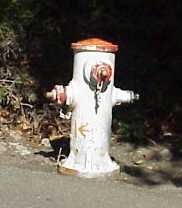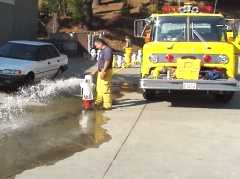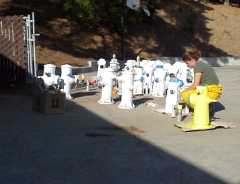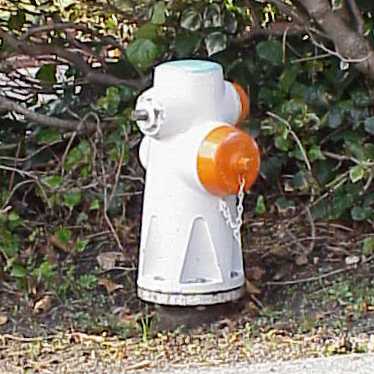© 2001 Capt. Willis Lamm, Water Supply Officer, Moraga-Orinda (CA) Fire District |
|
Current NFPA specifications state that every fire hydrant shall be equipped
with at least one large diameter pumper outlet. Out of the district's 1407
fire hydrants, 351 were installed years ago when lower standards were in effect.
Aside from being less efficient than current models, the Insurance Services Office (the organization that rates communities for purposes of setting fire insurance rates) assigns deficiency points for these obsolete hydrants. How much this affects our overall rating is based on the percentage that obsolete hydrants make up of the total hydrants in the district. |
Typical obsolete hydrants
|
|
|

|
| The Fire District entered into a Memorandum of Understanding with the East Bay Municipal Utility District (EBMUD) to implement a trial program to recondition used hydrants that had been removed from service and were in storage at the EBMUD Oakport Service Center. While these hydrants were older, they complied with current NFPA standards. Fire District forces would recondition these hydrants according to agreed upon specifications after which EBMUD would use the reconditioned hydrants to replace obsolete bodies for a flat labor fee of $ 100.00 per changeout. | |
|
|
Testing reconditioned hydrants.
|
|
The District will strive to replace 30 hydrants per fiscal year. Considering that a few additional hydrants will be replaced by EBMUD in conjunction with regular maintenance duties, we should have all obsolete hydrants replaced in ten years. In FY 1999/00 the crew reconditioned 23 hydrants. (The program started mid-year.) Halfway through FY 2000/01 the crew reconditioned 40 hydrants. The average cost, installed, has been about $ 180.00 per hydrant. The Hydrant Reconditioning Program also provides hydrants for the District's Rural Water Supply Program. Return to Water Supply IndexBack to Information Section | |
|
Unless otherwise noted, all contents of these WWW pages © 1996-2002, FireHydrant.org |



